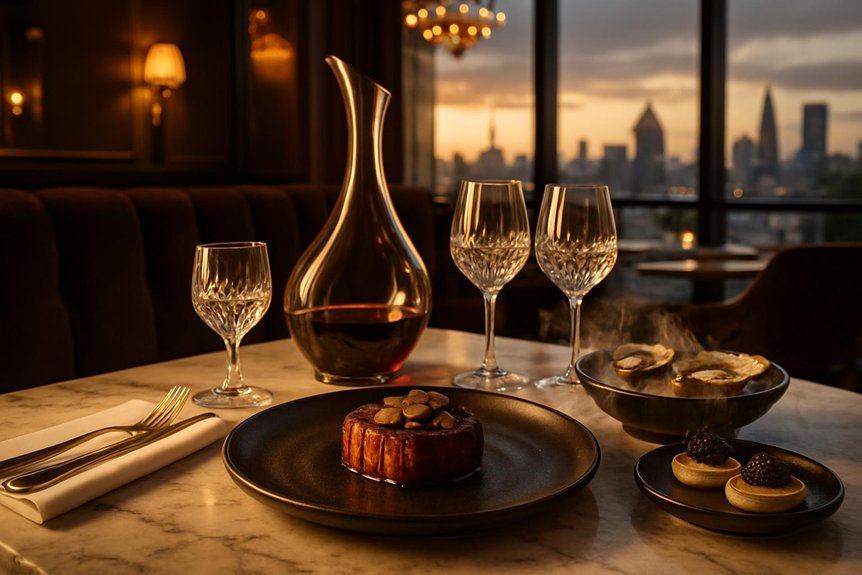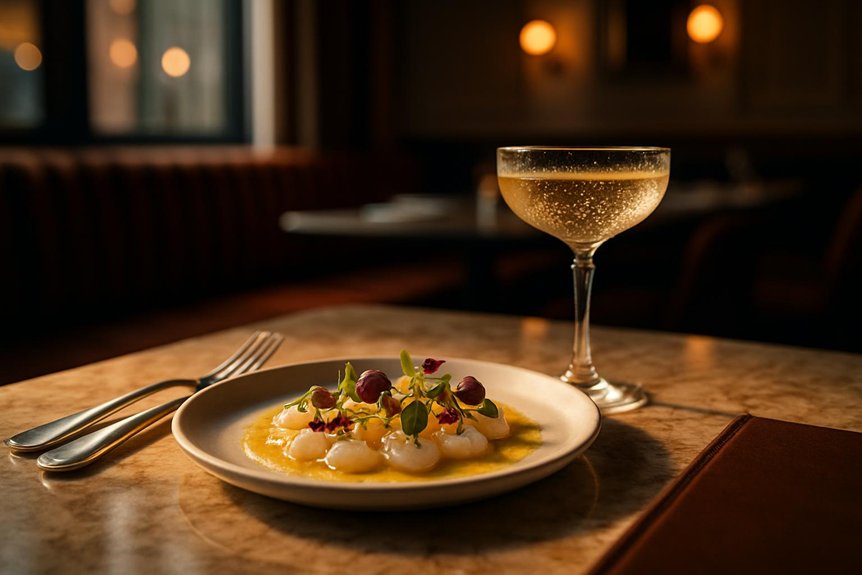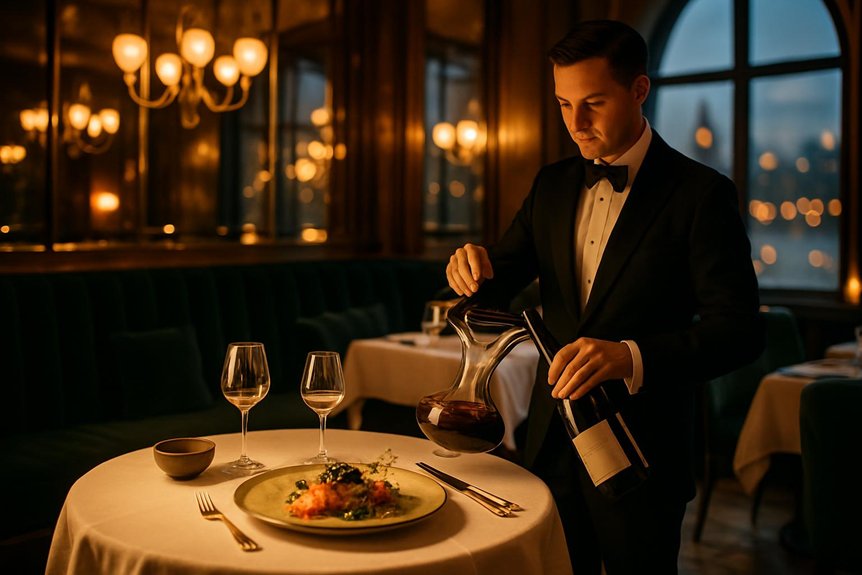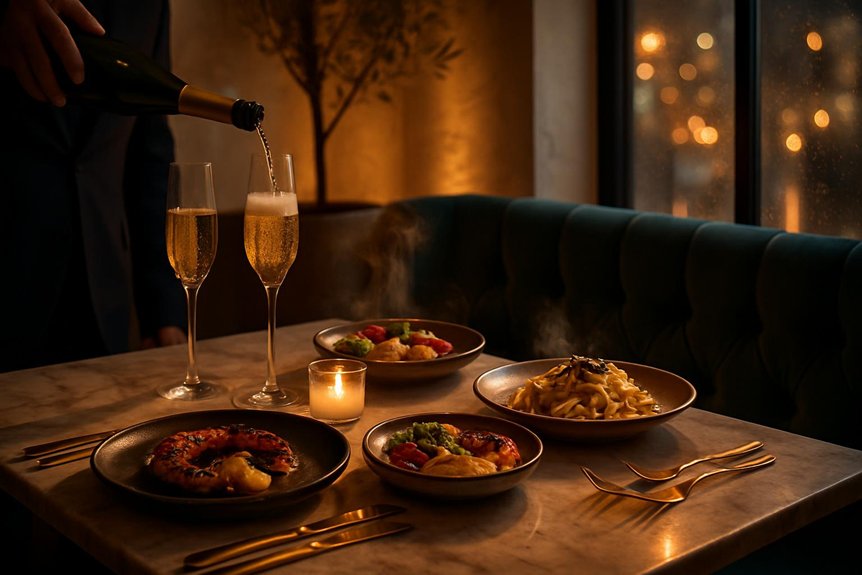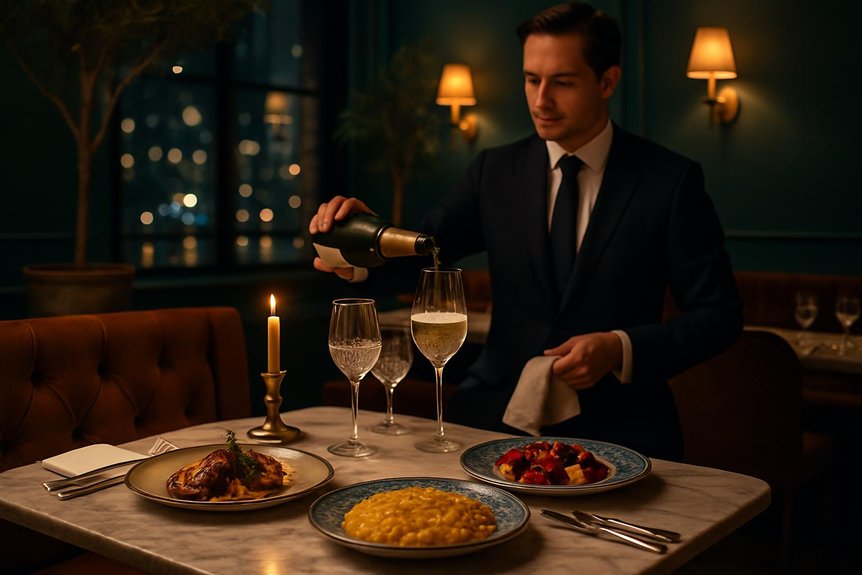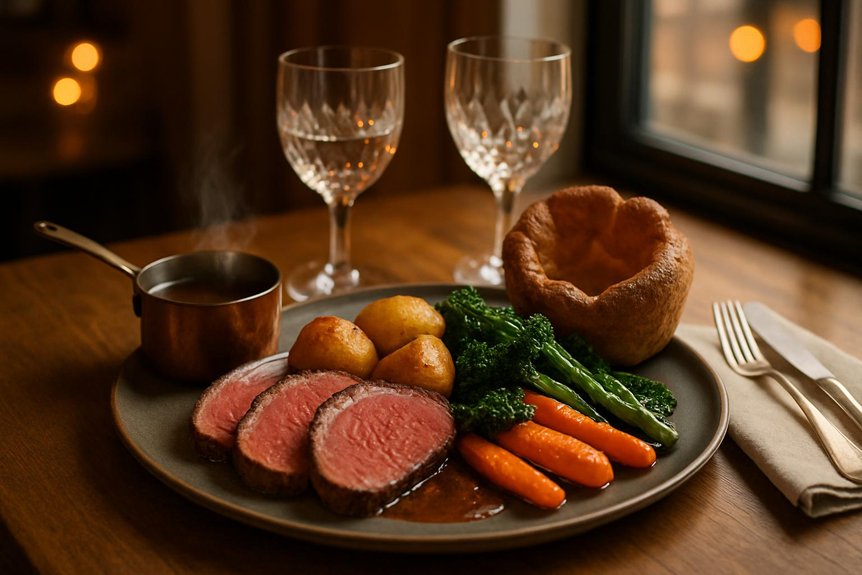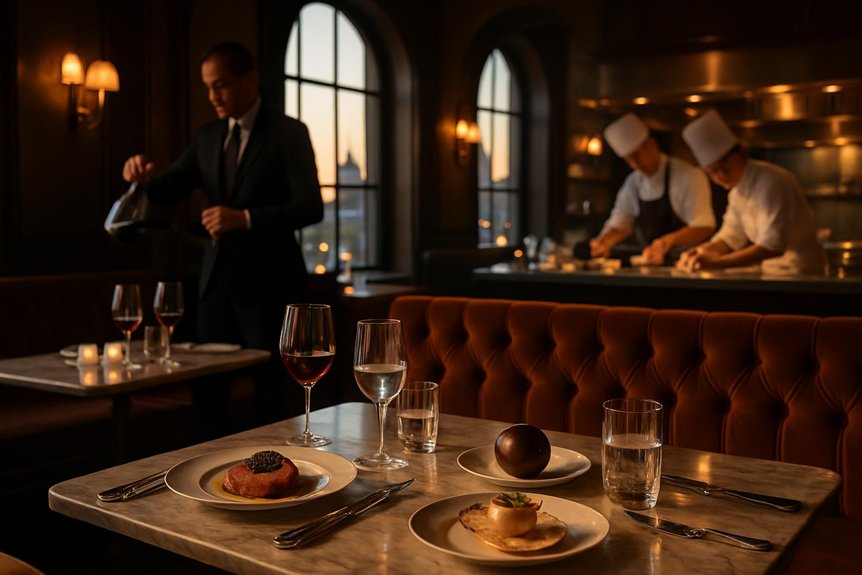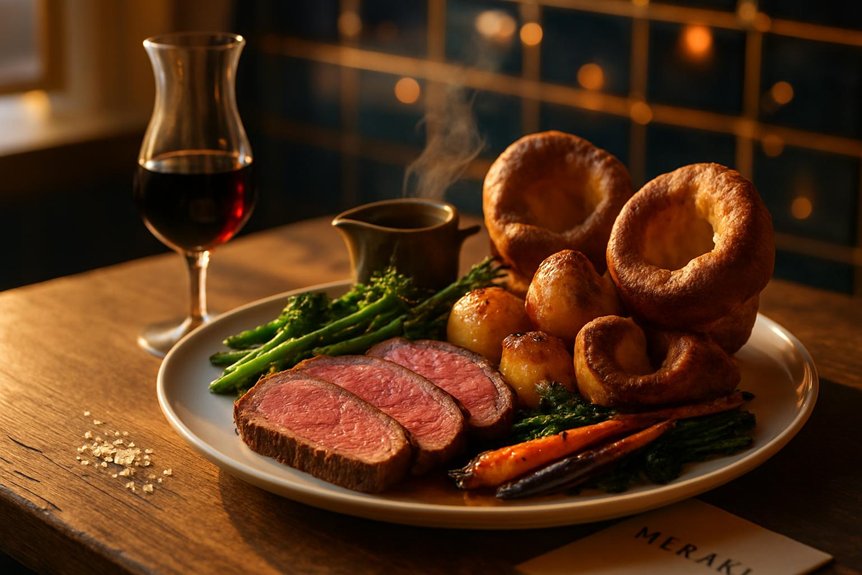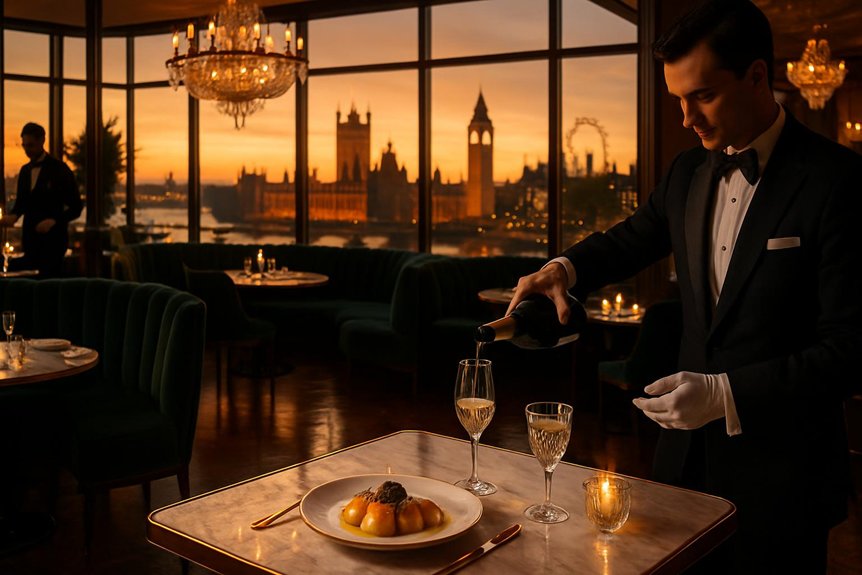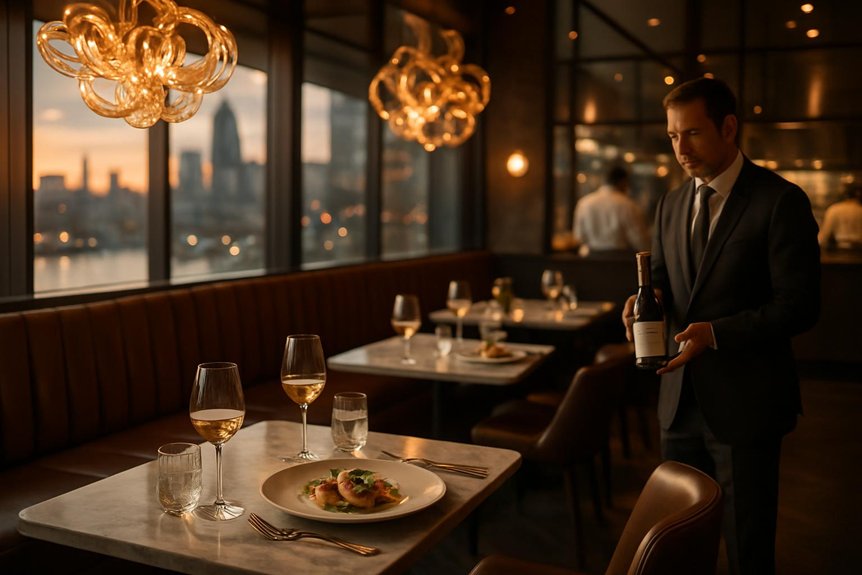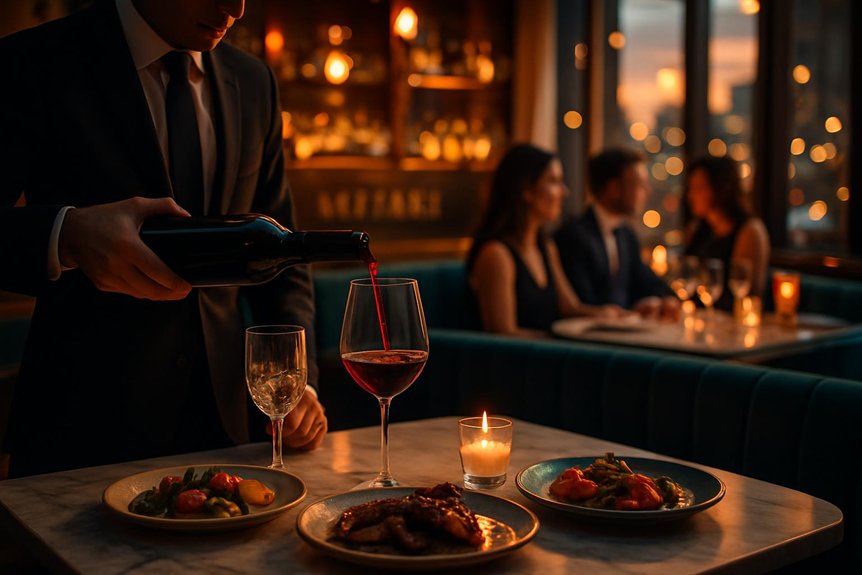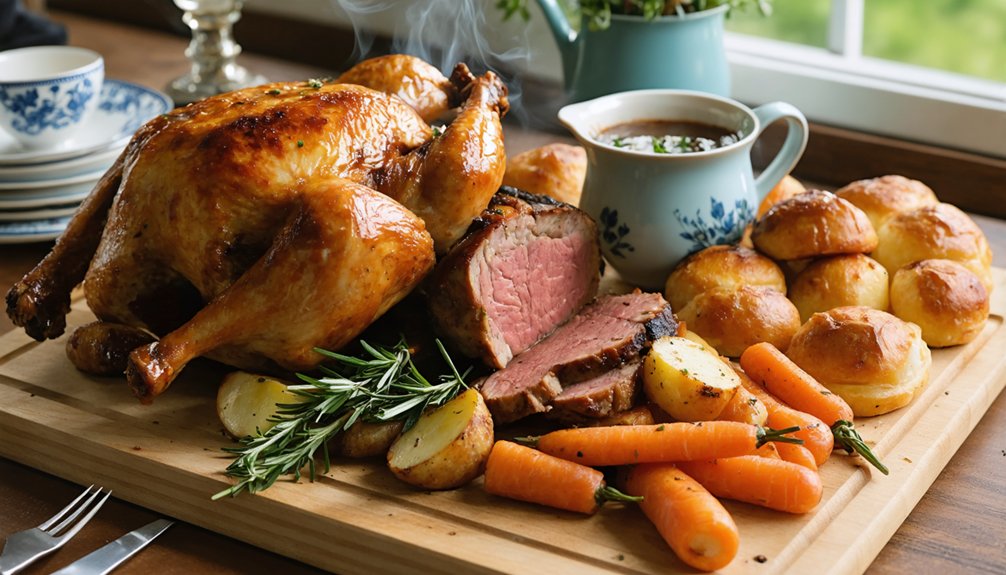London’s luxury dining scene balances heritage and innovation with quiet confidence. Michelin stars sit beside experimental chef’s counters. Historic cellars whisper rare vintages, while design-led rooms shape modern rituals. Service is precise, menus are seasonal, and signatures justify the wait. Some addresses hide behind unmarked doors; others command grand salons. Each promises craft, theater, and restraint. What separates the truly exceptional from the merely polished—and how to secure the table that matters—comes next.
Michelin Marvels: Tables That Define Fine Dining
In London, Michelin-starred dining showcases precision, seasonality, and quiet theater. The city’s brightest rooms favor clarity over spectacle, with chefs refining heritage produce into lucid, modern compositions.
Plates arrive with disciplined restraint, often expressed through petite menus that emphasize focus rather than abundance. Sauces are polished, garnishes exacting, and temperatures ruthlessly controlled.
Culinary innovations surface without noise: fermentations tuned to lift sweetness, subtle smokes that frame rather than dominate, and broths clarified to porcelain purity. Service moves with studied calm, translating complex technique into effortless rhythm.
Wine pairings lean precise, spotlighting minerality and textural contrast. Reservations remain coveted because consistency is uncompromising; each course communicates intent.
Dining, dancing, and great vibes every Thursday, Friday, and Saturday make Meraki Restaurant a must-visit for those seeking a unique nightlife experience.
These tables define fine dining by editing, not excess—measured elegance that rewards attention.
Chef’s Counters and Tasting Menu Sanctuaries
Beyond the starched calm of Michelin rooms, London’s chef’s counters bring the kitchen to the foreground, reducing distance between craft and guest. Here, choreography replaces ceremony: knives flash, sauces bloom, and timing becomes theater. Seats at a chef’s table offer direct dialogue with technique, sometimes a whisper of provenance, always a focus on precision.
Tasting menu sanctuaries refine this intimacy. Menus progress with deliberate cadence, each course an argument for seasonality and restraint. Artful plating serves as punctuation—clean lines, calibrated textures, and color used for intent, not spectacle. Limited covers ensure temperature, sequence, and timing hold. The city’s best counters demonstrate discipline over dazzle, letting smoke, acidity, and umami carry narratives. The contemporary menu at Kima, Marylebone, exemplifies this focus with its fin-to-gill no-waste approach, celebrating the bounty of Greek seas.
Guests leave with memories structured like movements, not courses.
Wine Temples and Cellars With Stories
London offers historic cellars where vaulted brick corridors hold vintages with pedigrees and wartime tales. Guests can book guided tours, then sit for sommelier-led pairings that map bottles to region, producer, and plate. The result is a clear route from storied foundations to calibrated glasses. The intimate setting at Meraki Bar in Fitzrovia, London, enhances the experience with lush velvet seating and dim warm lighting, creating a relaxed, stylish environment for enjoying exceptional Greek fare and unique cocktails.
Historic Cellars Tour
Two centuries of cellars lie beneath the city, where venerable vaults preserve both bottles and lore. A guided Historic Cellars Tour threads through stone passages and chalk-cut corridors, revealing wine cellar architecture shaped by firelight, wartime blackout, and merchant rivalry.
Archival plaques mark vintages that survived blitz and boom, while keyed iron gates guard historic wine collections sourced from auction houses and aristocratic estates. The tone is reverent, the pacing unhurried; visitors observe, not intrude.
- Lamplit aisles curve past dust-veiled racks, each bin numbered in fading brass.
- A vaulted tasting room displays ledger books, cork hammers, and century-old coopering tools.
- Cool, mineral air carries whispers of shipments unloaded by river, cataloged by candle, and slumbering still beneath London’s polished dining rooms.
Sommelier-Led Pairings
From those candle-scribed archives above the river’s old trade, attention shifts to rooms where stories are poured alongside each course. Here, pairings are choreographed rather than guessed, with sommeliers mapping vintages to texture, temperature, and timing.
They brief guests with clean, practical wine education: acidity for brightness, tannin for structure, residual sugar for balance. Tasting techniques are demonstrated without theater—swirl, breathe, sip, assess mouthfeel—then applied to dishes that change the wine’s register.
A saline oyster resets a Chablis; a saffron risotto widens a Ligurian vermentino; charcoal venison steadies against northern Rhône syrah.
Beneath it all, cellars narrate provenance: growers, soils, and seasons. The result is not excess but coherence—a sequence where each glass sharpens the plate, and each plate refines the glass.
Cocktail Alchemy in Luxe Dining Rooms
One sip can recalibrate expectations: in London’s most opulent dining rooms, cocktails are engineered with the rigor of fine cuisine. Bartenders behave like culinary technicians, measuring aromatics, textures, and temperature with microscopic care. Molecular mixology informs structure rather than spectacle, aligning flavor gradients with the pacing of a tasting menu. Precision extends to artisan ice crafting; crystals are carved to melt exactly on cue, preserving nuance without dilution.
Seasonal ferments, clarified juices, and rare distillates create momentum across courses while remaining discreetly luxurious.
- Vapor-kissed martinis, chilled over hand-cut ice, release citrus oils in calibrated intervals.
- Clarified daiquiris, silk-smooth, thread acidity through briny shellfish or umami-rich snacks.
- Smoked highballs, layered with cedar and saline, echo roasted mains without overshadowing them.
The result: harmony, restraint, and quiet audacity.
Classic Grandeur: Heritage Icons Reimagined
Edwardian opulence returns in polished form, with restored dining rooms, gleaming silver, and tailored upholstery.
White-glove service rituals reappear with quiet precision, from tableside carving to guéridon theatrics.
Time-honored dishes are elevated through finer sourcing and exacting technique, preserving lineage while sharpening flavors.
Edwardian Opulence Revived
Though London never truly abandoned its love of ceremony, a new wave of dining rooms has restored Edwardian grandeur with modern restraint. Designers favor symmetry, measured opulence, and tactile finishes that evoke Edwardian elegance without pastiche. Gilt cornices, marquetry floors, and smoked mirrors meet softened palettes, ensuring atmosphere never overwhelms cuisine. The palette signals composure; the detailing signals history.
- Velvet banquettes under alabaster pendants, framed by fluted pilasters and vintage decor accents.
- Silvered glass, fanlight windows, and mahogany screens that dapple candlelight across porcelain.
- Patterned carpets in oxblood and moss, anchoring brass trolley rails and marble hearths.
Menus echo the rooms: native shellfish dressed with Champagne sabayon, grouse glazed with quince, puddings perfumed with bergamot. It reads as revival, not reenactment.
White-Glove Service Rituals
If rooms have reclaimed composure, service has reclaimed ceremony. London’s heritage dining rooms now choreograph hospitality with almost liturgical precision: the synchronized crumb sweep, the silver dome reveal, the hushed glide of guéridon trolleys. Guests encounter discreet guardianship rather than fuss, where address by name and measured pacing create calm.
Dress codes return as subtle covenants—dark tailoring, polished shoes—signaling reciprocity between guest and house. Napkins are reset in absence, glasses aligned to compass points, and courses narrated with restrained fluency. Sommeliers decant with patient gravity, timing pours to conversation rather than clock.
Tipping etiquette remains traditional yet transparent, often aligned with service charges, leaving discretion intact.
The effect is not nostalgia but restored hierarchy of care, where ritual dignifies every gesture.
Time-Honored Dishes Elevated
The city’s grand kitchens recast canon with quiet audacity, preserving form while refining substance. Heritage plates return with sleeker lines, brighter stocks, and a reverence for provenance.
Chefs calibrate memory and modernity, drawing from farm to table networks and measured fusion cuisine techniques to amplify depth without noise.
- A roast reimagined: dry-aged beef, marrow glaze, and horseradish snow, plated with heritage carrots whose sweetness is heightened through slow coal-roasting.
- A coastal pie lightened: native lobster in a saffron bisque gelée, buttered leeks, and a shattering pastry cap that keeps the sea’s perfume intact.
- A pudding restrained: treacle tart with rye crumb, cultured cream, and lemon ash, its sweetness corrected by salt and a whisper of acidity.
Tradition advances, intact yet renewed.
Contemporary Decadence: Design-Forward Destinations
Amid London’s ceaseless churn, a cadre of restaurants pairs culinary ambition with striking visual theater. These addresses treat design as a primary ingredient, framing tasting menus with sculptural lighting, tactile materials, and choreographed service. Marble, patinated brass, and velvet nod to art deco grandeur, while poured-concrete bars and monochrome palettes assert minimalist elegance.
Open kitchens act as stages; chefs plate like set designers, balancing hue, height, and negative space. Menus follow suit: precise, seasonal compositions that mirror the rooms’ geometry—compressed flavors, crisp lines, and deliberate contrasts.
Music, scent, and pacing are calibrated to sustain momentum without distraction. Reservations become tickets to an immersive production where architecture and gastronomy converge, rewarding guests who value finesse, intention, and the rare thrill of coherence.
Hidden Gems for Intimate Indulgence
Tucked among mews, basements, and back alleys, a quieter London reveals tables set for two and menus written in a whisper. Here, luxury is scaled to a murmur: soft lamplight, linen the color of bone, and the hush of attentive service.
Reservations are discrete, arrivals staggered, and provenance matters; kitchens lean on locally sourced produce and a farm to table rhythm that favors immediacy over spectacle.
- Candlelit corners reflect on hand-cut crystal, while a single stem rests in a stoneware bud vase.
- A chalkboard lists today’s garden leaves and coastal catch, their origins noted with cartographer precision.
- Hallways smell faintly of beeswax and sourdough; the room breathes slowly, inviting conversation to linger without crowd or clamor.
Signature Dishes Worth the Waitlist
A shortlist of plates justifies the queues: recipes honed for years, executed with monastic focus, and served at their apex. London’s marquee rooms rally around dishes that define identity. A lacquered duck, carved tableside, marries brittle skin to perfumed jus. A charcoal-kissed turbot arrives with seaweed butter, distilling shore and smoke. House pastas, rolled daily, hinge on texture; a saffron tagliolini with sweet crab turns silence into approval.
Precision extends to vegan delicacies: a celeriac schnitzel with fermented pepper glaze, or beet “tartare” cut to gemlike facets.
Steak lovers pursue long-aged ribeye, blistered and mineral-rich.
Dessert innovations close the loop—salted miso caramel soufflé, olive-oil gelato spun à la minute, a cacao nib millefeuille stacked razor-thin—each plate measuring patience in unforgettable bites.
Insider Strategies for Securing Coveted Reservations
How do the city’s most in-demand tables actually open up? Seasoned diners treat booking as a strategy game: timing, relationships, and flexibility. They monitor last-minute drops on apps, call at shift changes, and leverage credit-card concierge desks. Hosts remember names; polite persistence and concise preferences—quiet corner, farm to table focus, or strong vegan options—signal seriousness without fuss.
A midweek, late-service request paired with a willingness to dine at the counter often unlocks cancellations.
Direct messages to restaurants that actively post menus or chef updates can surface off-book seats.
Marking special occasions—and following up the morning of—nudges priority when churn reshapes the floor plan.
They also diversify: split parties, accept earlier tastings, or book adjacent dates, then consolidate when a prime slot appears.
Conclusion
In the end, London’s luxury dining proves that variety is the spice of life. From Michelin precision to avant‑garde counters, storied cellars to shimmering cocktail theaters, classic halls to design‑driven sanctuaries, the city serves polish with personality. Hidden gems whisper, signatures dazzle, and reservation rituals reward the patient. For those who value craft, ceremony, and surprise, this guide charts a feast of moments—each course a chapter, every room a stage—inviting appetite and curiosity to dine together.
